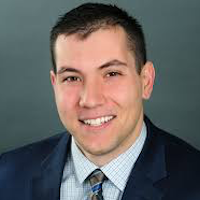Article
Nonmedical Factors Influence Biologic Access for Rheumatoid Arthritis
Author(s):
Sociodemographic, physician, and insurance coverage influences who receives biologic DMARD therapy, findings of a cohort study found.

Mark Tatangelo, BA
Factors including advanced patient age and greater distance to a rheumatologist can significantly influence the time to when a patient with rheumatoid arthritis receives biologic therapy, according to a new study.
A team of Canada-based investigators, led by Mark Tatangelo, BA, of the University of Toronto, identified characteristics associated with rheumatoid arthritis patients prescribed biologics, in a study which sought to understand the prescribing patterns associated with the drug class and patient subtypes.
Their findings showed that pharmacologic care for patients with rheumatoid arthritis is not uniform across patients and prescribers. For one, younger and female patients, who live in urban areas and closer to prescribers, are more likely to be prescribed a biologic disease-modifying antirheumatic drug (DMARD) than their peers.
Investigators used administrative and patient-level data from 17,672 residents of Ontario, Canada with rheumatoid arthritis. Patients in the cohort were diagnosed with rheumatoid arthritis at age 67 or older between 2002—2015 and received at least 1 csDMARD. The patients were covered under the Ontario Health Insurance Plan.
The team collected demographic data from the Registered Persons Database, physician visit data from Ontario Health Insurance Plan claims, inpatient hospitalization records from the Discharge Abstract Database, and prescription medication dispensation from Ontario Drug Benefit claims.
They also found disparity among prescriptions for treatment subclasses. Patients with rheumatoid arthritis who received a conventional synthetic DMARD (csDMARD) were approximately 75 years old at baseline, predominantly women (65.6%), and generally lived in more urban areas.
Tatangelo and colleagues found mixed results for the association between socioeconomic factors and the time a patient received their first biologic DMARD. Neighborhoods that were categorized in greater income classification (HR, 0.92; 95% CI, 0.65-1.31; P = .16) and marginalization index composite scores (HR, 0.99; 95% CI, 0.87-1.11; P = .81) were not found to be significant factors associated with a patient receiving their first biologic prescription.
However, the likelihood of receiving a prescription was correlated with greater distance to the medication prescriber (HR per 10-km [6.2 miles] increase, 1.01; 95% CI, 1.00-1.02; P <.001).
Patients who lived further from the nearest rheumatologist—who was not necessarily the rheumatologist the patient was seeing—were less likely to receive a biologic DMARD (HR per 10-km [6.2 miles] increase, 0.99; 95% CI, 0.98-0.99; P <.001).
Immigrants were significantly less likely to receive biologic prescriptions (HR, 0.59; 95% CI, 0.42-0.84; P = .003).
During the study period, 214 unique prescribers wrote 10 or more biologic prescriptions. Prescribers were primarily rheumatologists (70.6%) and primary care physicians (12.1%). Nearly 72% of 405,321 prescriptions of biologic DMARDs and csDMARDs were by a rheumatologist, while nearly 14% were by a primary care provider.
Although the implications of prescriber preferences are unclear, Tatangelo and colleagues wrote it shows that differences in healthcare delivery exist.
Approximately 300,000 Canadians and 1.3 million Americans suffer from rheumatoid arthritis. Treatment advances improve quality of life for this population of patients, including the use of csDMARDs. The development of biologic DMARDs helped specifically target the inflammatory mechanisms of rheumatoid arthritis.
Patients with lower socioeconomic status were least likely to receive biologic DMARDs, which investigators noted was surprising because other studies show socioeconomic status as a known risk factor for more severe disease.
If a patient has local access to a rheumatologist, it could extend the effective treatment course of csDMARDs, the investigators suggested. The findings also showed that patients might be more willing to travel long distances to receive biologic treatments.
In an editorial accompanying the study, Natalie McCormick, PhD, Clinical Epidemiology Program, Division of Rheumatology, Allergy, and Immunology, Massachusetts General Hospital, expressed the importance of identifying and addressing undertreatment when biologic DMARDs are clinically warranted but delayed for nonmedical reasons.
“Indeed, Tatangelo et al acknowledged that some of the patient-level sociodemographic factors that were associated with longer time to initiation of DMARDs may be indicative of disparities in access or provision of care,” McCormick wrote.
The correlation between older age and a longer time to receive a biologic DMARD showed a bias against providing the treatment for older patients, despite few signals indicating higher risk of infection or adverse events.
The study "Association of Patient, Prescriber, and Region With the Initiation of First Prescription of Biologic Disease-Modifying Antirheumatic Drug Among Older Patients With Rheumatoid Arthritis and Identical Health Insurance Coverage," was published online in JAMA Network Open.





